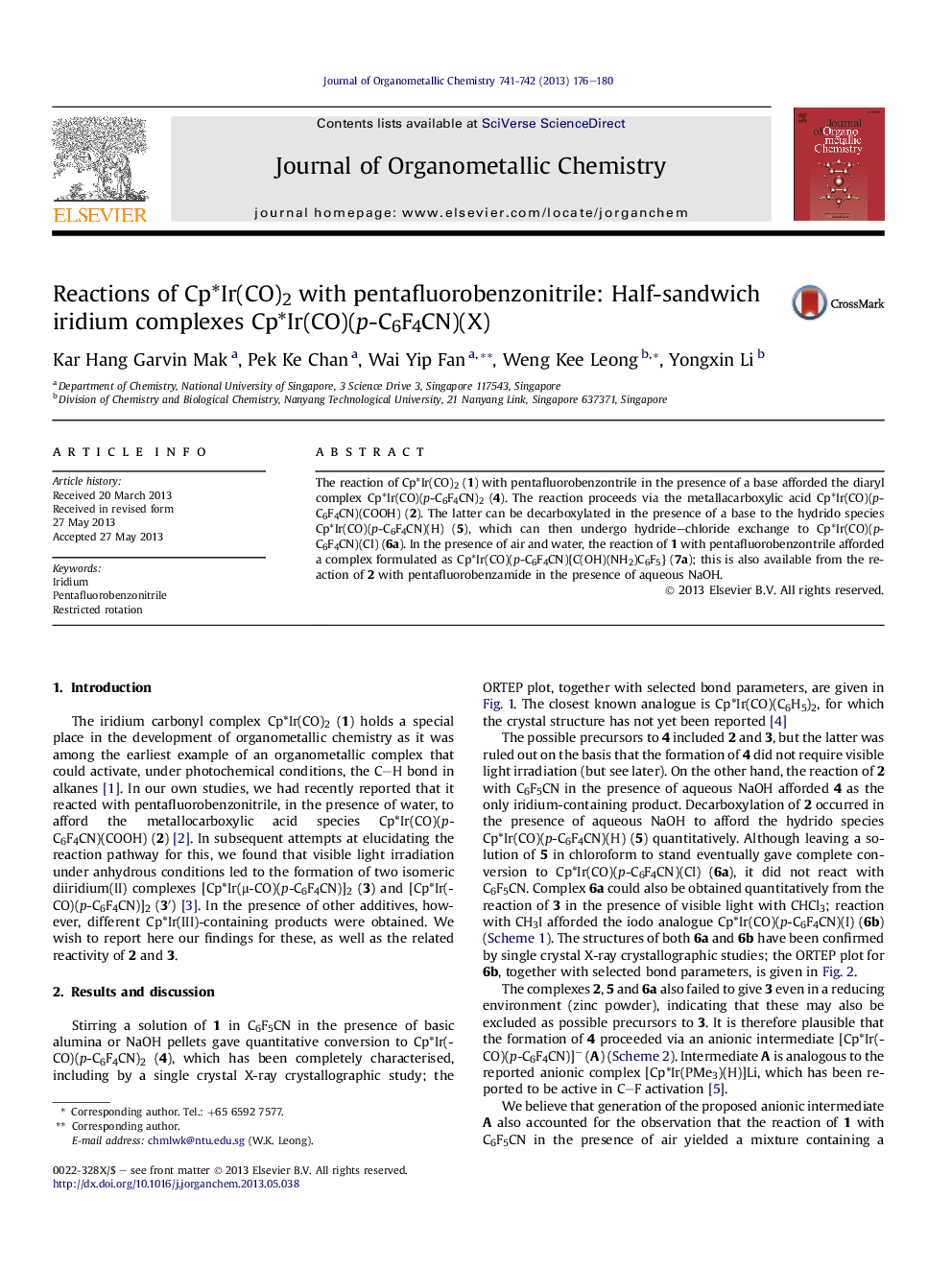| Article ID | Journal | Published Year | Pages | File Type |
|---|---|---|---|---|
| 1325685 | Journal of Organometallic Chemistry | 2013 | 5 Pages |
•Formation of a diaryl iridium complex Cp*Ir(CO)(p-C6F4CN)2.•Formation of an iridium hemiaminal complex Cp*Ir(CO)(p-C6F4CN)[C(OH)(NH2)C6F5].•Restricted rotation of C6F4CN ring.
The reaction of Cp*Ir(CO)2 (1) with pentafluorobenzontrile in the presence of a base afforded the diaryl complex Cp*Ir(CO)(p-C6F4CN)2 (4). The reaction proceeds via the metallacarboxylic acid Cp*Ir(CO)(p-C6F4CN)(COOH) (2). The latter can be decarboxylated in the presence of a base to the hydrido species Cp*Ir(CO)(p-C6F4CN)(H) (5), which can then undergo hydride–chloride exchange to Cp*Ir(CO)(p-C6F4CN)(Cl) (6a). In the presence of air and water, the reaction of 1 with pentafluorobenzontrile afforded a complex formulated as Cp*Ir(CO)(p-C6F4CN){C(OH)(NH2)C6F5} (7a); this is also available from the reaction of 2 with pentafluorobenzamide in the presence of aqueous NaOH.
Graphical abstractCp*Ir(CO)2 reacts with C6F5CN in the presence of a base to give the diaryl complex Cp*Ir(CO)(p-C6F4CN)2.Figure optionsDownload full-size imageDownload as PowerPoint slide
